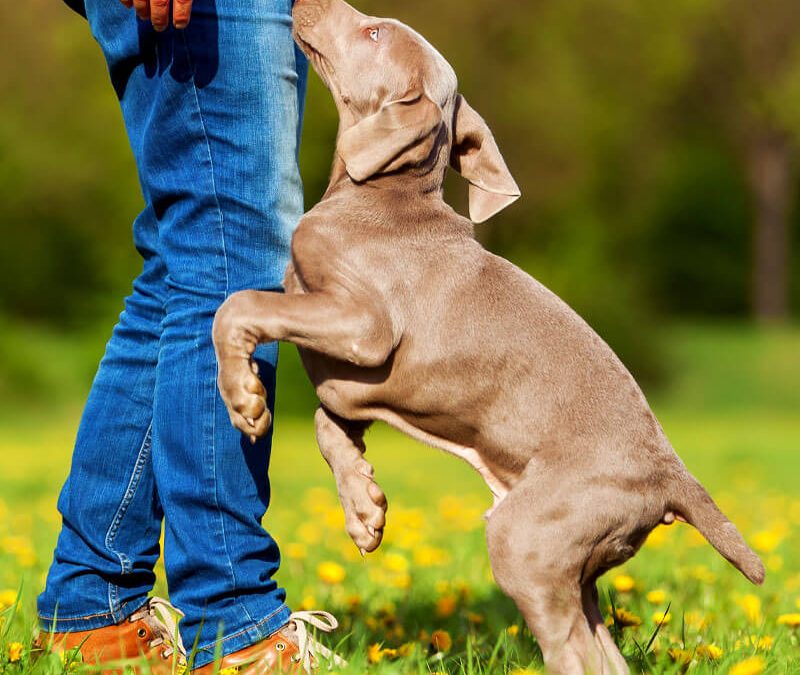Positive Reinforcement Training for Dogs
Positive reinforcement dog training is a popular and effective method used by many dog owners and trainers to teach their furry friends new behaviors and discourage unwanted ones. This form of training focuses on reward-based methods and avoids punishment or intimidation. By understanding the science behind positive reinforcement training, dog owners can enhance their bond with their pets and create a happier and more well-behaved canine companion.
Understanding Positive Reinforcement Training:
Positive reinforcement dog training is based on the principle that rewarding desirable behavior increases the likelihood of it being repeated. This approach relies on positive reinforcements such as treats, praise, and play to motivate dogs to behave appropriately. By rewarding desired behaviors, owners can establish clear communication with their dogs and encourage them to learn and respond to commands effectively.
Benefits of Positive Reinforcement Training:
1. Builds Trust and Bond: Positive reinforcement training creates a strong bond between dog and owner. The consistent use of rewards helps establish a relationship based on trust, mutual respect, and cooperation.
2. Effective Learning: Dogs learn best when they are motivated and engaged in the training process. Positive reinforcement keeps dogs interested and enthusiastic, making learning more efficient and enjoyable.
3. Long-lasting Results: Unlike punishment-based methods, positive reinforcement training focuses on teaching dogs what to do rather than focusing on what not to do. This helps dogs develop good habits that are more likely to stick around in the long run.
4. Encourages Healthy Behavior: By rewarding desired behaviors, positive reinforcement training encourages dogs to engage in behaviors that promote their overall well-being, such as sitting calmly, walking politely on a leash, or staying focused during training sessions.
5. Reduces Stress and Fear: Punishment-based training methods can be stressful and cause fear in dogs. Positive reinforcement training, on the other hand, creates a positive and safe environment, reducing stress and promoting a sense of trust and confidence in dogs.
Principles of Positive Reinforcement Training:
1. Timing: Timing is crucial when using positive reinforcement. Dogs should be rewarded immediately after performing the desired behavior, so they can clearly associate the reward with their action.
2. Consistency: Consistency is key to effective positive reinforcement training. Owners need to be consistent with the use of rewards, cues, and expectations to avoid confusion and provide clear guidance to their dogs.
3. Value of Rewards: Identifying high-value rewards is essential to motivate dogs. Treats that are especially appealing to the dog, praise, or play can be used as rewards to reinforce positive behaviors effectively.
4. Gradual Progression: Dogs should be taught new behaviors gradually, starting with simple commands and gradually increasing the difficulty as they progress. This helps to build confidence and ensure success at each step of the training process.
5. Adaptability: Positive reinforcement training should be adaptable to each individual dog. Understanding a dog’s unique personalities, preferences, and motivations is crucial to tailor the training approach accordingly.
6. Patience and Persistence: Training takes time and patience. Dog owners should be persistent and consistent in their efforts, understanding that dogs learn at their own pace.
Tips and Tricks for Positive Reinforcement Training for Dogs:
1. Start with Basic Commands: Begin with teaching basic commands such as “sit,” “stay,” and “come.” These commands form a foundation for more advanced training later on.
2. Use Clicker Training: Clicker training is a popular tool in positive reinforcement training. Dogs learn to associate the sound of the clicker with a reward, making it a powerful tool to mark the desired behavior instantly.
3. Break Tasks into Smaller Steps: Complex behaviors can be broken down into smaller steps, allowing the dog to understand and master each step before moving on. This prevents overwhelm and ensures a higher success rate.
4. Consistency is Key: Consistency in your commands, rewards, and expectations is crucial. Use the same cue words and gestures each time you expect the dog to perform a behavior, and make sure all family members are consistent in their approach.
5. Keep Training Sessions Short: Dogs have short attention spans, so keep training sessions short and engaging. Aim for multiple short sessions throughout the day rather than a single lengthy one.
6. Be Patient and Encouraging: Dogs respond best to positive reinforcement, praise, and encouragement. Use a happy and upbeat tone, and celebrate each small success along the way.
Setup Your First Training Today!
Positive reinforcement dog training is a highly effective and humane approach to teaching dogs new behaviors and reinforcing good habits. Utilizing rewards, consistency, and patience, dog owners can build a strong bond with their furry friends while instilling obedience, confidence, and joyful companionship. By following the principles and tips outlined in this blog, dog owners can embark on a successful positive reinforcement training journey with their canine companions.
Remember, being a responsible and caring dog owner includes providing the best training for your furry friend. For expert guidance and assistance with positive reinforcement dog training, consider seeking the help of a professional dog trainer in Orange County. They can offer personalized advice and support to ensure a harmonious and well-behaved relationship with your beloved pet.

